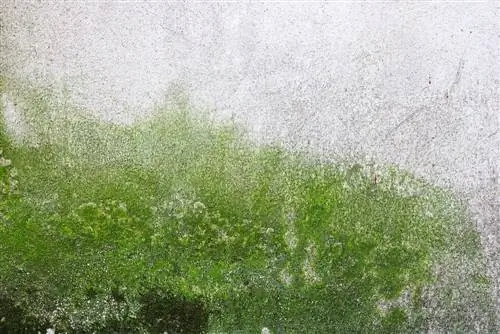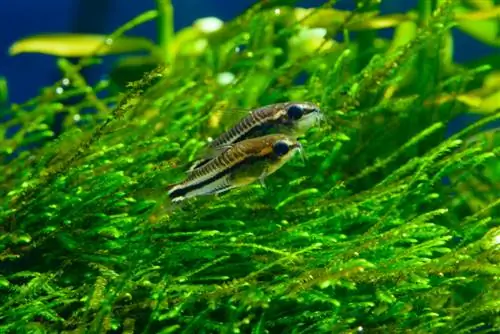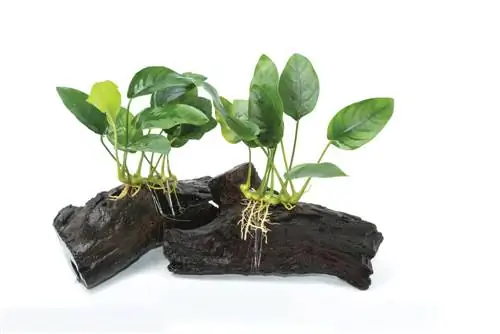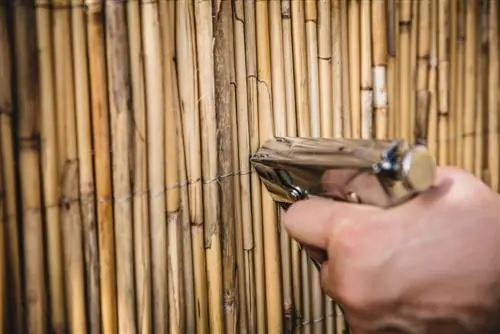- Author admin [email protected].
- Public 2023-12-16 16:46.
- Last modified 2025-01-23 11:22.
Java moss is able to cling to anywhere with its adhesive roots. On rocks, roots and even smooth plastic objects. But these roots take time to form. In order for the moss to hold its position, it must be temporarily secured.
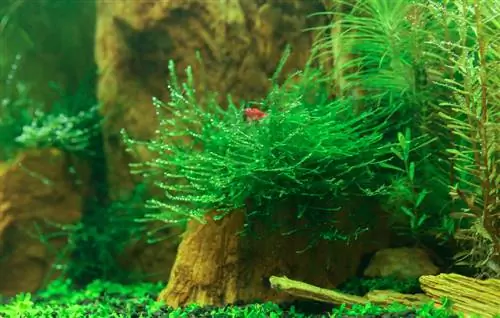
How do you attach Java moss to the aquarium?
To attach Java moss to the aquarium, place the moss on a suitable object and secure it with nylon cord. Alternatively, you can glue it on with special glue or weigh it down with stones. After a few weeks, when attachment roots have formed, remove the attachment material.
Java moss needs support
In its native Southeast Asia, Java moss grows along streams and rivers. It is firmly attached to the ground with its adhesive roots and cannot be washed away. On the banks of natural bodies of water, natural materials provide support. Stones lying around are often taken over by Java moss. But also pieces of wood lying on the river bank.
Stop at the aquarium
Even in the aquarium, it is not difficult for this moss to find a suitable object to which it can extend its roots. Because it can also stick to smooth surfaces. For example, it can settle on walls if it finds algae to cling to. Pump hoses are also not ignored. A nice side effect is that the unsightly pump is attractively wrapped in green moss. Java moss also weaves a green carpet on the bottom of the pool.
Here are a few more options:
- Stones
- dead roots
- Broken glass
Mooring materials
A nylon cord (€9.00 on Amazon) is best for tying Java moss. It is elastic, does not cut and does not rot too quickly. But there are two other options: stick the Java moss with special glue or clamp or weigh it down with stones.
Tie up Java moss
If possible, work outside the aquarium. Tying it up is easier this way than in the water. Place the moss on the item as seems ideal to you. Then secure it with a thread.
The java moss can be placed in the tank immediately after it has been tied up. A bright place is ideal. If after a few weeks the Java moss has formed enough roots, the yarn can be removed again.
Java moss complaining
At the bottom of the pool it is easier to weigh down the moss with a stone or an object so that it stays in place. It can also be clamped between two objects. Once the moss has grown firmly into the substrate, the objects can be removed again.
Tip
Java moss can be easily propagated by cutting off a piece of an existing specimen and attaching it to another place.


